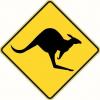CS:
In addition to my lecture on nails, I’m also giving a talk on “double irons” – aka “cap irons,” “back irons” or “chipbreakers.”
While a few people on the forums have burned this topic in effigy, I have found that a reasoned, historical-based discussing of this 18th-century device helps students immensely. Most woodworkers don’t have the patience to wade into the nasty discussions about double irons to extract the useful bits.
This lecture is about the useful bits. (And why Stanley needs to spanked for almost ruining the technology for us.)
He's not talking about us, is he?
I wonder what Stanley did wrong according to our friend Chris.





 Reply With Quote
Reply With Quote


 Why would penny pinching manufacturers make extra parts just to FRUSTRATE their customers??????? That kind of of bass ackwards to business wisdom,isn't it?
Why would penny pinching manufacturers make extra parts just to FRUSTRATE their customers??????? That kind of of bass ackwards to business wisdom,isn't it?



